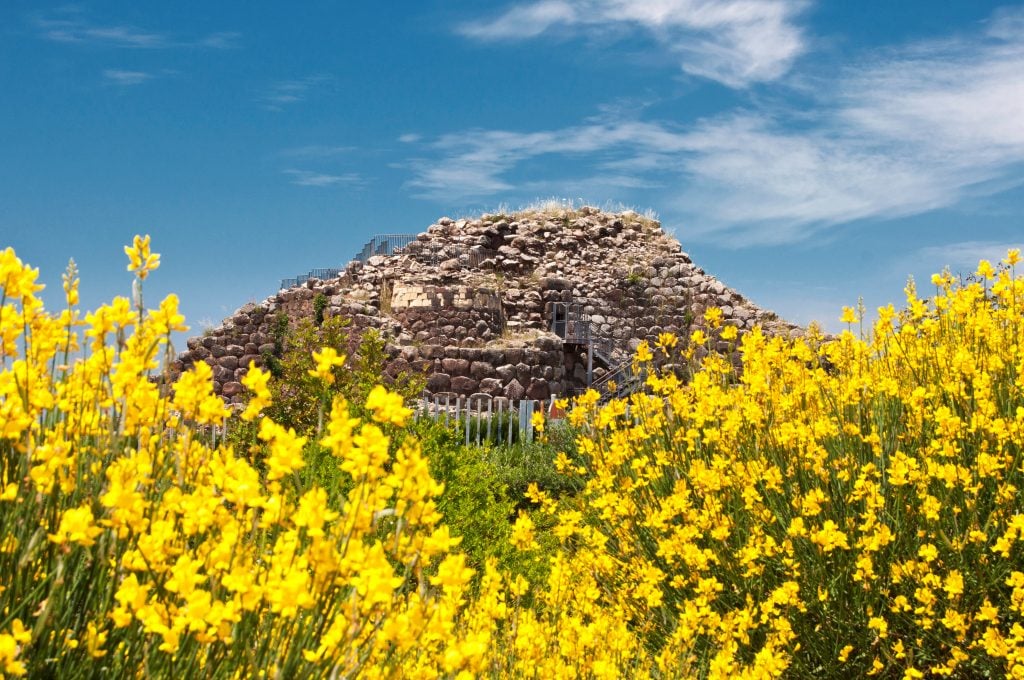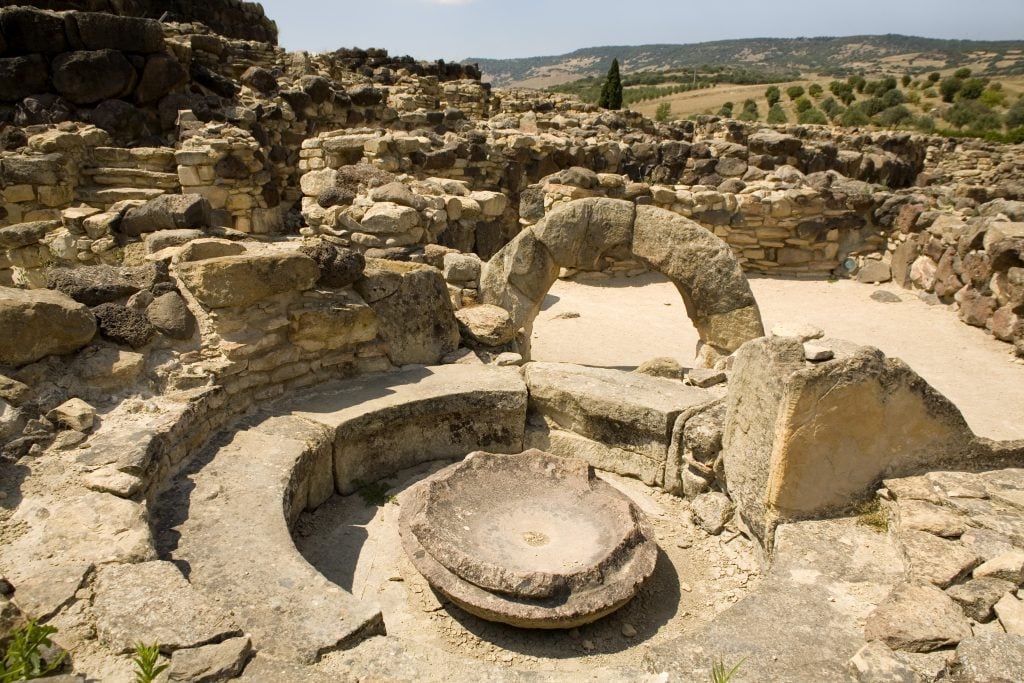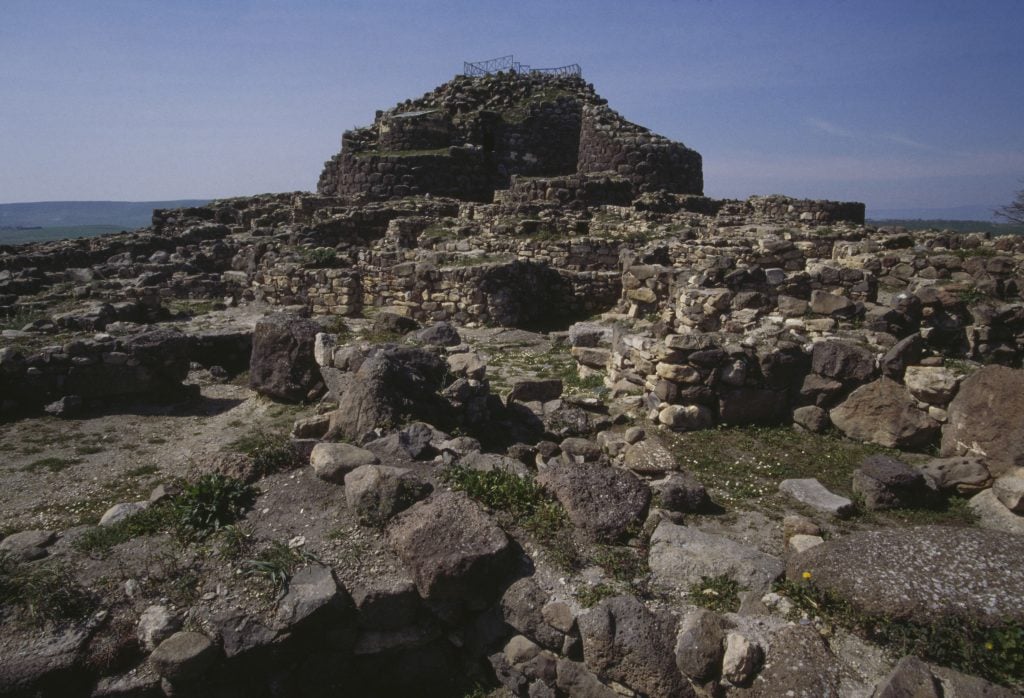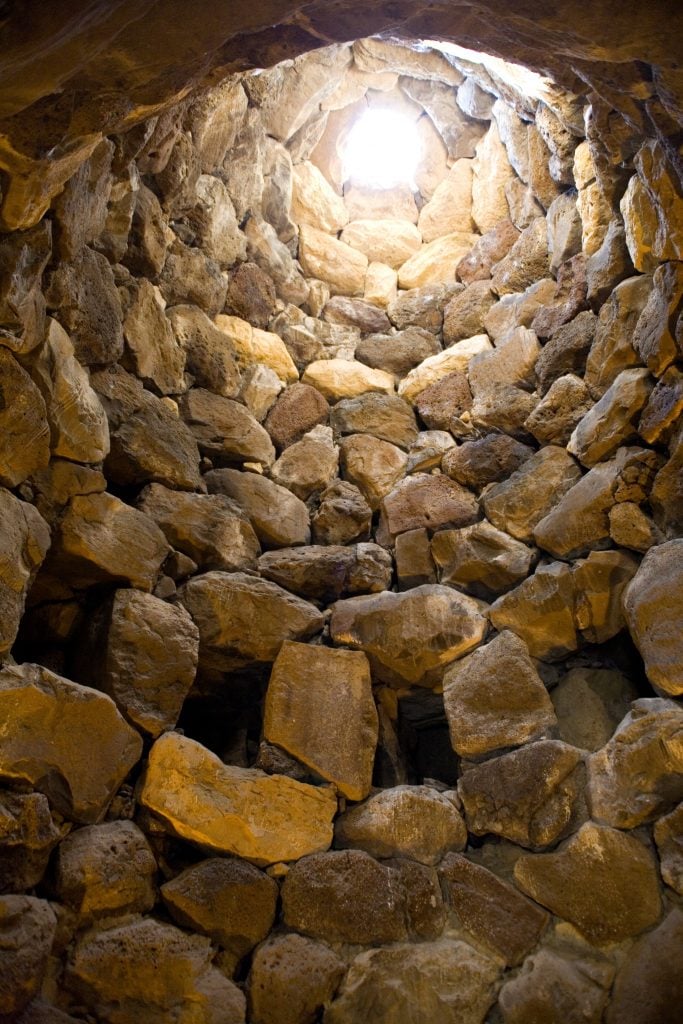Archaeology & History
Who Were the Mysterious Builders of This Ancient Stone Megalith in Sardinia?
The massive complex was built by the region's oldest-known settlers.

Like many ancient sites, the existence of Su Nuraxi—a 3,500-year-old megalithic complex in Barumini, Sardinia—was known to local farmers long before it caught the attention of professional archaeologists.
In this case, the archaeologist in question was Giovanni Lilliu, the eventual founder of the School of Specialization in Sardinian Studies at the University of Cagliari, and a leading expert on Sardinian antiques. Freshly graduated from Rome’s National School of Archeology, Lilliu took Barumini’s farmers at their word, and readily procured the funds and resources necessary to organize a thorough excavation of what his sources referred to as “Sa Funtuna” or “the well” in English.

Another view of Su Nuraxi. Photo: Photo by Raimund Franken/ullstein bild via Getty Image.
The excavation, which was carried out in the 1950s, lasted more than five years. Before the archaeologists could begin the dig, they first had to remove significant layers of soil and grass. The process required more than 40 workers, several oxen, and some 20 million lira.
The results, however, were worth it. When the excavation concluded, Lilliu and his colleagues discovered one of the largest known complexes left behind by the Nuragic people, a mysterious culture that populated Sardinia from the 18th century B.C.E. all the way up to the 2nd century C.E.

Archaeological site of Su Nuraxi in Barumini. Photo: Getty Images.
Thought to have descended from the Neolithic Cardial Ware culture that spread across Southern Europe and the western Mediterranean during the Bronze Age, Nuragic culture is named after their most well-known architectural feat, the nuraghe—ancient megalithic edifices that have survived in the thousands.
The Nuraghe of Barumini is one of the biggest and is a UNESCO World Heritage Site. It features a central, truncated conical tower (now broken), which is thought to have originally stood up to 62 feet tall. The tower contains three superposed chambers, which were probably assembled between the 17th and 13th centuries B.C.E. At some point during the late Bronze Age, this central structure was joined by four additional towers, connected by a wall that was expanded upon during the Iron Age. Together, these structures circumscribed an inner courtyard which contained a well.
The purpose Su Nuraxi would have served its builders remains unclear. Some researchers believe the megalithic structures functioned primarily as settlements, initially housing individual families or even clans before eventually evolving into towns and military outposts.
Others suspect that, much like other nuraghe, it was constructed for religious reasons, and that the well at the center of the structure was dedicated to a god or goddess.

Inside the well at Su Nuraxi. Photo: Raimund Franken/ullstein bild via Getty Images.
Perhaps they served a political purpose, housing gatherings of different clans during moments of crises. Or maybe their purpose was economic, allowing members of the Nuragic culture to prepare fertile land for agricultural activity, administer trade and communication routes, or serve as rest stops for traders.
Unless new archaeological evidence provides a clear answer, we’ll never know for sure. Despite thriving for almost an entire millennium, the Nuragic culture began to decline around 1,200 B.C.E., when a prolonged drought emptied cities, spurned migration, and reduced the population.
Nowadays, nuraghe megaliths remain an important symbol of Sardinian pride and heritage, and Su Nuraxi is one of the island’s most popular tourist destinations.
Sometimes, archaeology gets big. In Huge! we delve deep into the world’s largest, towering, most epic monuments. Who built them? How did they get there? Why so big?





